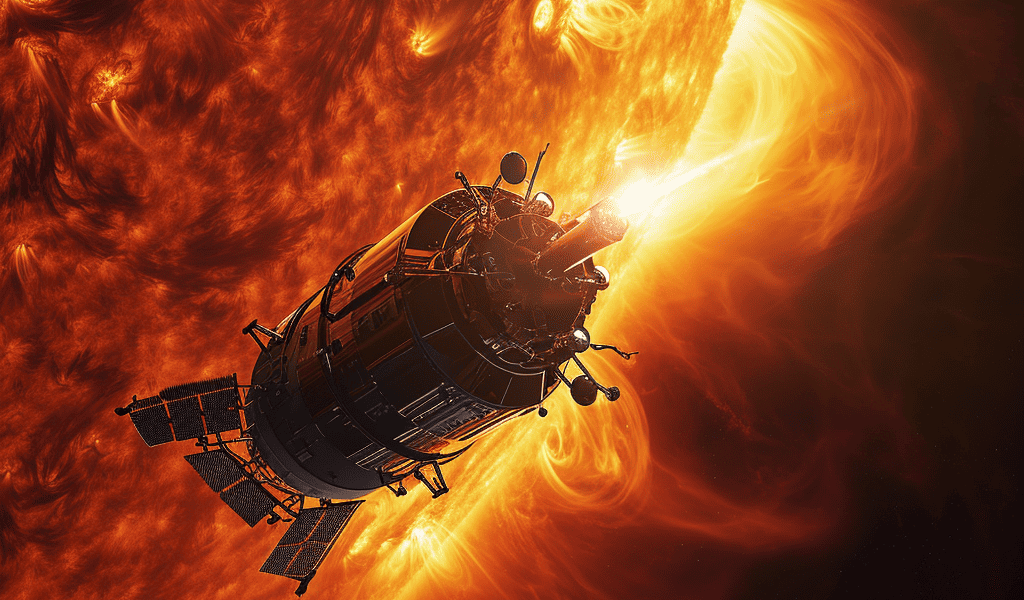A year from now, on 24 December, Nasa’s Parker Solar Probe will achieve an unprecedented feat in space exploration by racing past the Sun at an astonishing speed of 195 km/s, or 435,000 mph. This will mark the closest approach of any human-made object to the Sun, coming within just 6.1 million km, or 3.8 million miles from the Sun’s ‘surface’.
Dr. Nour Raouafi, the Parker project scientist, described the upcoming event as monumental for all humanity, likening it to the historic Moon landing of 1969. The probe’s incredible speed is attributed to the immense gravitational pull it experiences as it falls towards the Sun, akin to flying from New York to London in under 30 seconds.
Launched in 2018, Nasa’s Parker Solar Probe aims to make repeated and increasingly closer passes of the Sun. The upcoming maneuver in late 2024 will take the probe to just 4% of the Sun-Earth distance, providing an unprecedented opportunity to study the Sun’s environment.
However, the mission presents significant challenges, particularly the extreme temperatures the probe will encounter, with temperatures on the front of the spacecraft expected to reach 1,400°C at its closest point to the Sun. To mitigate this, Parker’s strategy involves swift entry and exit, utilizing a suite of instruments deployed from behind a thick heat shield to make measurements of the solar environment.
The anticipated reward for this daring mission is the acquisition of breakthrough knowledge on key solar processes, particularly the workings of the corona, the Sun’s outer atmosphere. Scientists are eager to gain a clearer understanding of the corona’s counter-intuitive superheating, where temperatures can reach over a million degrees, far exceeding the surface temperature of the Sun.
Moreover, the probe will be positioned within the corona region, where charged particles are accelerated into a supersonic wind moving at 400 km/s, a phenomenon that is yet to be fully explained by scientists.





